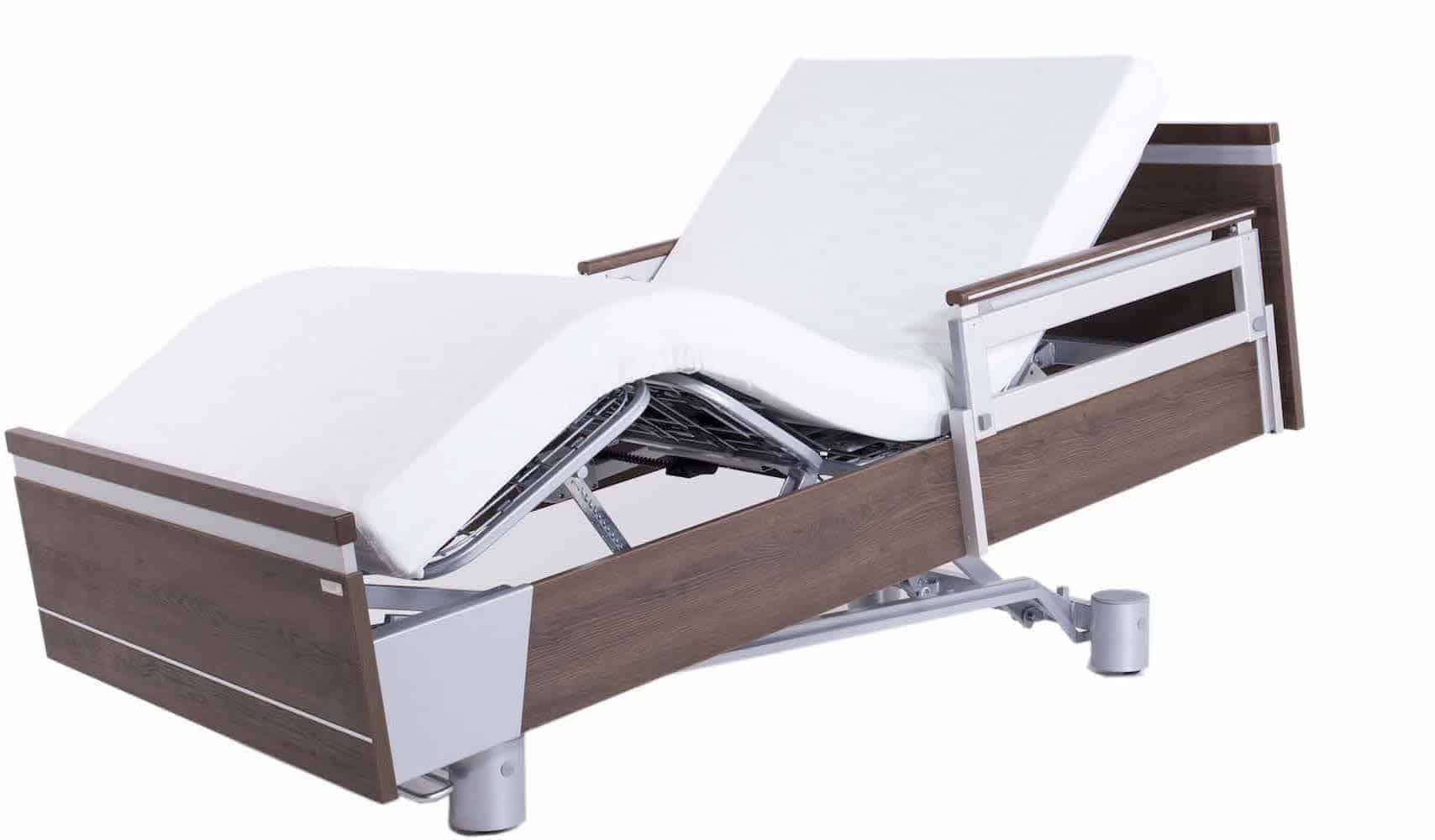Learn About Choosing A Hospital Bed For Your Home
| Key Takeaways |
|---|
| ✅ Consider four main factors when choosing a home hospital bed: mobility issues, room space, transfer needs, and aesthetics. |
| ✅ For mobility issues, opt for beds with adjustable frames and hand controllers. Features like bed rails add an extra level of safety. |
| ✅ High-low elevation is crucial for those who rely on other mobility equipment like canes or wheelchairs. |
| ✅ Ensure the bed fits in the available room space and allows for easy movement and caregiver access. |
| ✅ SonderCare beds offer both functionality and aesthetics, making them suitable for home use. |
Are you looking to upgrade your home bed or that of a senior loved one? Hospital beds have special features designed for medical assistance, but these features bring added well-being and comfort that an ordinary bed frame and mattress cannot provide. How can you choose a hospital bed for your home?
In choosing, consider four factors: mobility issues, the space of the room, the need for transferring to other mobility equipment, and the desired look one wants from their bed.
Mobility Issues Are A Key Factor In Choosing Home Hospital Beds
The user’s ability to get into and out of their bed will inform what kind of hospital bed they should use at home. In-home hospital beds should come with bed rails, which the user and their caregivers can raise and lower depending on the patient’s needs. Side assist rails help prevent falls and give the patient an extra level of safety as they rise from and lower themselves onto the bed. You can also choose to add more assist side rails for a greater degree of protection.
When health and mobility problems mean the user cannot adjust themselves while in bed, they will need a hospital bed with an adjustable bed frame and hand controller. The adjustable head and feet, as well as high-low elevation, will help caregivers assist with actions like turning and repositioning.
SonderCare high-low care beds help those with mobility obstacles by being fully electrical. It means users and their caregivers can adjust the bed without relying on their muscles. Features like the adjustable head and feet and high-low elevation are all controlled using a hand remote, making the feature an excellent addition for patients who must reposition the bed themselves.
Transfers To Other Equipment Are Important To Consider When You Choose A Home Hospital Beds
Many hospital bed users with mobility challenges rely on assistive equipment like canes, walker rollators, and wheelchairs. They require a hospital bed that makes transferring into and out of bed easy. These users may have additional challenges; they could have an injury or need to recover from an operation and cannot move as independently as they would under healthy circumstances.
High-low elevation is an essential feature for those who use other mobility equipment. The user and their caregiver can raise and lower the overall height of the bed with a hand controller. Elevating it allows the user to move more easily out of bed or from the bed to another piece of medical equipment (e.g. a patient lift or wheelchair) becomes easier to manage. Lowering the bed helps the patient get out and place their feet flat on the floor,
When choosing a bed for your private residence, always select one that has a high-low elevation. It’s an ideal option for anyone who needs patient care but wants to age in the home they own. Manual or semi-electric beds will not provide the same degree of independence for the user.
Space In The Room Matters When Choosing A Hospital Bed
The average care bed measures 36″ wide x 80″ long. These dimensions differ slightly from a conventional twin, making hospital beds versatile for most rooms. However, it’s still necessary to place it where the patient can get in and out of a hospital bed as smoothly as possible while ensuring they do not feel crowded.
The general rule for hospital beds is that they need at least four square feet. The space ensures that the user will have enough room to move around and that the care staff can access the bed from all sides. Choose a room with enough space to put the hospital bed in any position.
The hospital bed should go in a location where you or a caregiver can hear your loved one if they need assistance. Many people place the bed on the main floor so the user can avoid climbing stairs. SonderCare home care beds come with casters – specially-designed wheels – for easy movement around a home’s floors.
Look & Aesthetics Helps When Choosing Your Hospital Bed For Home Use
Many hospital bed users choose this type of bed because they want to stay in their homes as long as possible. While hospital beds meet a user’s regular health and comfort expectations, they don’t always look like they belong in the home. Many models look cold and sterile as if they belong in a medical facility rather than in someone’s private room.
The SonderCare™ hospital bed is the model to choose when confronting these problems. Designed to conform to the latest international standards, we’ve styled our beds to look more like a standard flat or adjustable bed than an institutional model. They come with elegantly designed rails, headboards and footboards that will fit any room’s décor, creating comfort and well-being for both users and family members. Users can choose between two finish options to suit their style and preference.
From Our Experience... "In my two decades of experience, choosing a hospital bed for home use comes down to several key factors: patient needs, adjustability, safety features, and ease of use. Consider the patient's medical condition and what features will provide the most comfort and support, such as head and foot adjustments or built-in massage functions. Safety features like side rails are crucial, especially for those at risk of falls. User-friendly controls allow for easy adjustments, promoting independence for the patient. It's not just about buying a bed; it's about investing in comfort and quality of life."
Kyle Sobko Hospital Bed Expert
- When choosing a hospital bed for home use, consider four main factors: mobility issues, room space, need for transferring to other mobility equipment, and aesthetics.
- For mobility issues, opt for beds with adjustable frames and hand controllers. Features like bed rails and side assist rails add an extra layer of safety.
- Transfers to other equipment like canes, wheelchairs, or patient lifts are facilitated by high-low elevation features, which are essential for those with mobility challenges.
- Space considerations are crucial; the bed should fit comfortably in the room, allowing enough space for the user and caregivers to move around.
- Aesthetically, choose a bed that blends well with your home’s decor. SonderCare beds offer elegantly designed rails, headboards, and footboards.
- SonderCare’s high-low care beds are fully electrical and come with a hand remote for easy adjustments, making them ideal for those who need to reposition the bed themselves.
Frequently Asked Questions About Choosing Hospital Beds For Home
Choosing a hospital bed for your home involves considering factors like the user’s medical needs, bed type (manual, semi-electric, electric), adjustability features, mattress compatibility, size, budget, and available space.
Consult with the user’s healthcare provider to understand their medical condition, mobility limitations, and specific requirements. This information will guide you in selecting a bed that addresses their needs.
Hospital beds come in manual, semi-electric, and electric models. Manual beds require manual adjustments, semi-electric beds have electric head and foot adjustments, and full-electric beds offer complete electric adjustability.
Adjustability features are crucial as they allow the user to find comfortable positions for sleep, resting, and activities. Look for beds with smooth adjustments for the head, foot, and overall height.
Hospital beds come in various sizes, similar to regular beds (twin, full, queen). Choose a size that fits the user comfortably and fits well within the available space.
Set a budget based on the user’s needs and financial capacity. Consider the cost of the bed itself, any necessary accessories, and potential ongoing costs for maintenance and replacement parts.
Measure the available space in the room where the bed will be placed. Ensure there’s enough room for the bed to be adjusted and for caregivers to move comfortably around it.
If possible, try out the bed at a local medical supply store or showroom to assess its comfort and features. If not, read customer reviews and research thoroughly before making a decision.
Look for beds with sturdy frames, lockable casters, secure side rails, and emergency power-down options. These features ensure the user’s safety during adjustments and transfers.
Follow the manufacturer’s maintenance guidelines and keep the bed clean and well-lubricated. Regularly inspect for any loose screws or parts, and address any issues promptly to ensure the bed’s longevity.
Yes, involving the healthcare provider ensures that the chosen bed meets the user’s medical needs and provides the necessary comfort and support. They can offer valuable recommendations based on the user’s condition.














